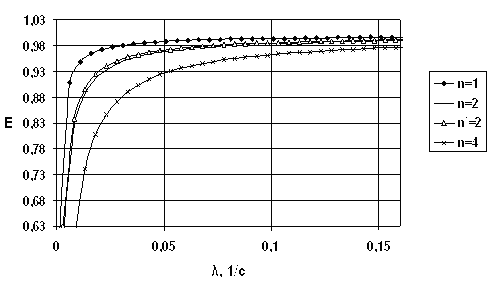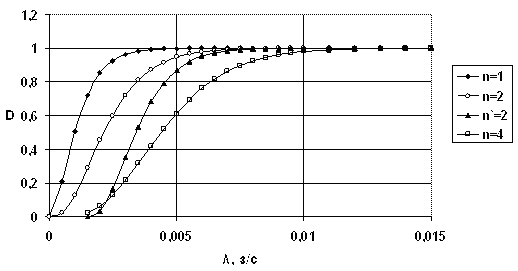
Prokofieva KatyaFaculty: Power engineering and mechanicalSpeciality: Lifting and transporting machines and equipmentTheme of master`s work: "Choice of rational loading-transporting equipment on the base of probabilistic analysis of his working processes"Leader of work: Hicenko N.V. |
Abstract |
CHOICE OF RATIONAL LIFTING-TRANSPORTING EQUIPMENT ON THE BASE OF PROBABILISTIC ANALYSIS OF ITS WORKING PROCESSES Problem and its communication with scientific or practical tasks.
Introduction of modern methods of choice in the concrete terms of optimum technical decisions is able to increase the common labour productivity, reduce detention of transport for loading and unloading operations and this same accelerates its turn, facilitates labour, conditions transporting works costs in the enterprises.
where Raising of task. Thus, development and approbation of the scientific grounded method of choice of rational lift transporting equipment on the base of probabilistic analysis of its working processes on the example of traveller is the purpose of this work.
A storage with one crane (pic.2а) can be divided in two areas: loading/unloading and area of storage. The initial position of crane is determined by the co-ordinates of O point, a load is transported from a point A to В. It is necessary to take into account the use possibility of a few attendant aggregates. The calculating schemes of service areas are changed. The examined variants of mechanization with one- two- four traveling cranes are shown on a pic.2.
For description of process of loading a mathematical model was developed. A mathematical model allows to define time of implementation of cycle, as total duration of separate operations which make the process of loading, here casual appearance generate different co-ordinates of points O, A and B. The analysis of chart of mass maintenance of storage with the use of this mathematical model can be carried out on the method of Monte Carlo. The selection of values of cycle duration settles accounts with the use of mathematical model, and its statistical descriptions settle accounts, above all things is estimation of the expected value of time of service, characterizing mean time of implementation of request. In work [3] as efficiency index of the use of equipment probability of simultaneous work-load of all aggregates is offered:
 is probability of that the amount of requirements will act equal to the amount of attendant of n aggregates; is probability of that the amount of requirements will act equal to the amount of attendant of n aggregates; is probability of receipt of amount of requirements of less, than amount of attendant aggregates. is probability of receipt of amount of requirements of less, than amount of attendant aggregates.
An index does not take into account possibility of overload service system. Therefore for estimation of the examined variant of mechanization it is important also to know probability of formation of turn on service, which is expressed by a formula:
The graph of dependence E of
The graph of dependence D of  on a pic.4 enables to see, what compactness of requests flow of a turn is occurred maintenance for every amount of attendant aggregates. on a pic.4 enables to see, what compactness of requests flow of a turn is occurred maintenance for every amount of attendant aggregates.For the systems assuming the presence of turn at loading/unloading works without substantial costs, it is necessary to use the Е criterion. At the same time choice of equipment in the systems, which the delay of implementation of loading/unloading works is unpossible for, we more mean the D index.
Conclusions and direction of further researches. Thus, the developed method allows (on the example of traveling cranes) to estimate efficiency of work of different application charts and models in the conditions of casual incoming flow of requirements on loading/unloading operations on the criteria of degree of load of attendant aggregates and probability of formation of turn on service. In future it is planned to extend this method on other classes of loading/unloading equipment. |

 is the middle number of requests in time unit.
is the middle number of requests in time unit.



 on a pic.3 shows that at the identical flow of incoming requests the simultaneous work-load of all aggregates diminishes with the increase of number of aggregates. It enables to trace, at what size of incoming flow it is required to increase or diminish the amount of units of loading/unloading equipment.
on a pic.3 shows that at the identical flow of incoming requests the simultaneous work-load of all aggregates diminishes with the increase of number of aggregates. It enables to trace, at what size of incoming flow it is required to increase or diminish the amount of units of loading/unloading equipment.
